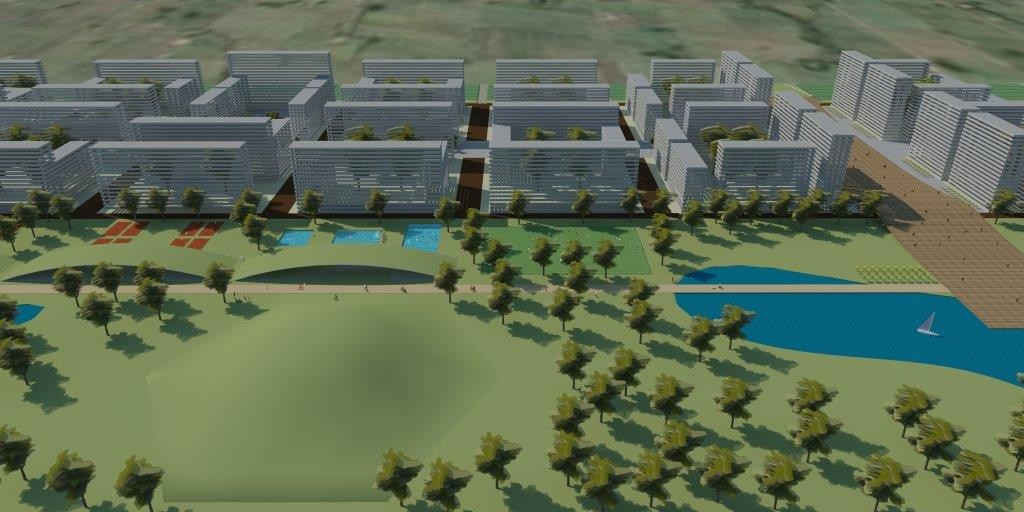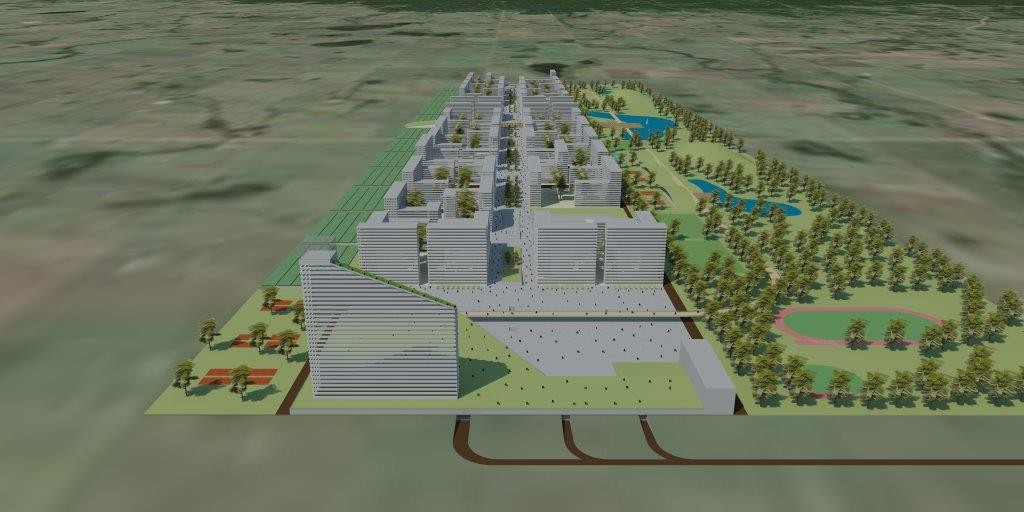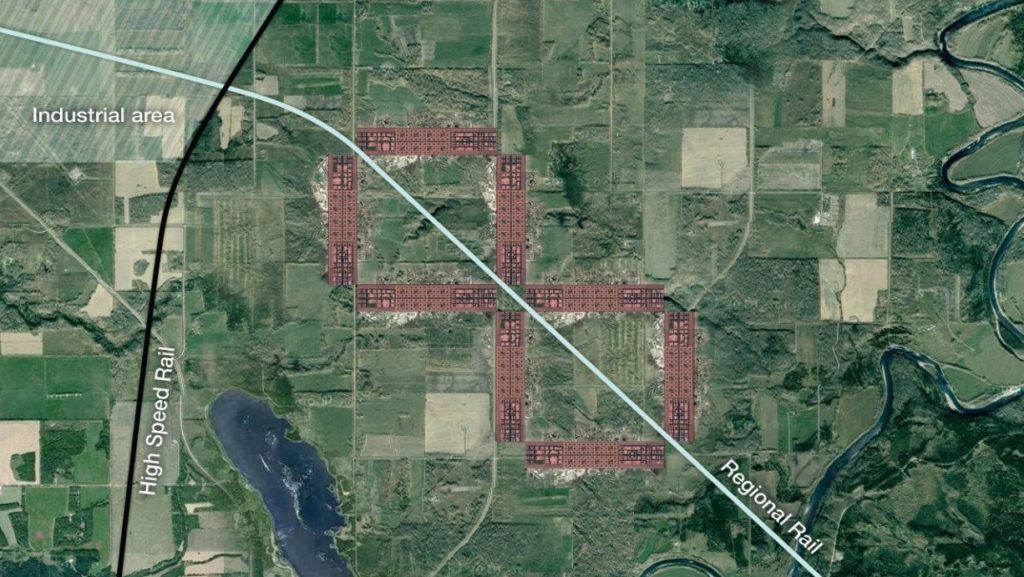Overview
Renata 20k is a larger version of Renata 4k. A modern walkable community that requires no motorized vehicles at ground level. On Renata 20k; public transport and freight delivery will be segregated below ground. (see video).
Tall buildings keep distances short, and all are within 300m of a subway stop.
This city doesn’t grow beyond 20,000, but similar cities will grow near it, each with their own theme and character. Small cities have many advantages with a focus on walking, energy efficiency, wide streets and plazas, covered winter walkways, free subway, live without a car, user friendly parks and recreation, easier policing and emergency services.
What’s wrong with our cities now?
Certainly, mixing pedestrians with car and truck traffic is a hindrance to both. We can’t change that which is done, but in new communities we shouldn’t want to perpetuate a system that we know doesn’t work. Cities are evolving faster now, and transportation can’t keep up.
How it works.
Each city of 20,000 will be on a piece of land 2.2 km (1.4 mi) long by 700 meters (7/16 mi) wide providing 176 acres for the buildings and common areas, and 209 acres for parks and outdoor sports. Buildings are 1,400,000 sq m of residential, commercial, and schools. Two subway lines will provide good frequent service. A parkade capacity of 7,380 cars is situated at one end of the city. The subway level will accommodate a bus terminal, taxi stalls, a car share office, and freight. Emergency services and maintenance will be at ground level. A 10 meter wide access road between the buildings and the park for construction and emergency services from the local highway to all buildings. Freight will be delivered to a freight loading dock at the parkade by truck and transferred to the subway for delivery at slow passenger times. This will provide an invisible delivery of freight that is direct and efficient. As more Renata cities and industrial areas are developed, more freight will come directly by rail.
Emergency Services
The Renata city will have quick response teams of police, paramedics, and fire chiefs. They will evaluate emergencies and direct the appropriate services. Foot patrol policing will be more efficient and social issues handled better in a community where people interface more.
Super Mall
Research has suggested that today’s average shoppers are only willing to walk 300 meters from a car or public transport. With our subway close, the whole Renata city becomes a Supermall.
Our City
Unimpeded walkability will improve safety, physical fitness, and social interaction. When people are able to easily walk to work, to the store, or just for fun, the rate of vandalism and theft will drop. When people are able to talk to their neighbors they will feel more connected to their community, leading to a higher quality of life and safety for all.
Parks and gardens easily accessible to all.
What you see is a town planning study and not a building design proposal. Town planning is about spatial organization, building footprints, and heights. This is a model to express our ideas and later they will be used as an underlay for architectural design proposals.
Great cities require a local gathering place to meet, mingle, and exchange ideas. Renata features a large public square 100 meters wide by 330 meters long across the center of the city and a main street 50 meters wide to use and enjoy.
Summary
We eclipse the traditional city with a focus on mobility and efficiency.
What comes next
Regional & Intercity Rail
8 cities appreciating & respecting farmland
In the depiction above, there is a group of eight Renata cities with 160,000 people. They are connected by regional rail to each other, to the industrial areas, and to Intercity High Speed Rail and Hyperloop. A dense urban area, without congestion, nicely woven through farmland.
Mobility for Sustainability
They go hand in hand.
Looking back at looking ahead
The September 1969 issue of National Geographic had an article entitled “The Coming Revolution in Transportation”. The Boeing 747 and the Supersonic Concord had flown, Hovercraft were operating as ferries, electric cars were on the market with a 50 mile range, and automatic controlled car driving was being tested.
Some selected quotes from that article:
“In New York City a truck moves at a slower pace today than a horse drawn cart did 60 years ago.”
“A fourth of downtown Los Angeles is paved for use of automobiles.”
“Americans expend more energy and wealth on transportation than in any other field.”
What have we learned since 1969? It’s been 50 years, but as at this writing we would be hard pressed to show significant gains on the situation described in that article; or even changes that will produce significant gains someday in the future.
One statement made in the article may be the crux of our dilemma: “Don’t forget, innovations will have to be superimposed on a system which already exists.” That kind of thinking is limiting our ability to address the issues. If we accept that statement, we are doomed with the unfixable. We need to challenge the future and make some changes.
These are incredible times! Fun to be part of it.
Copyright © Ben Gray. All rights reserved.







